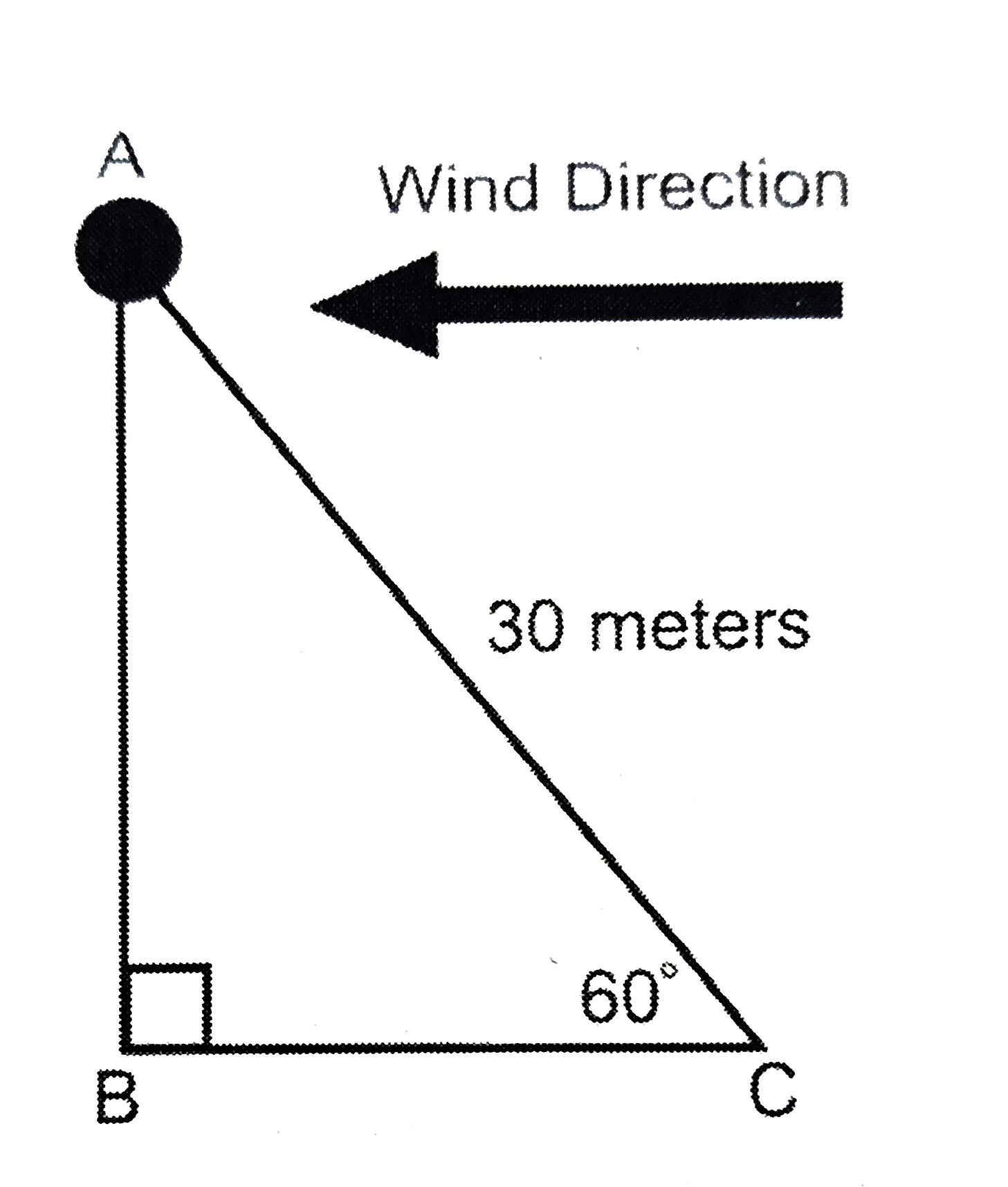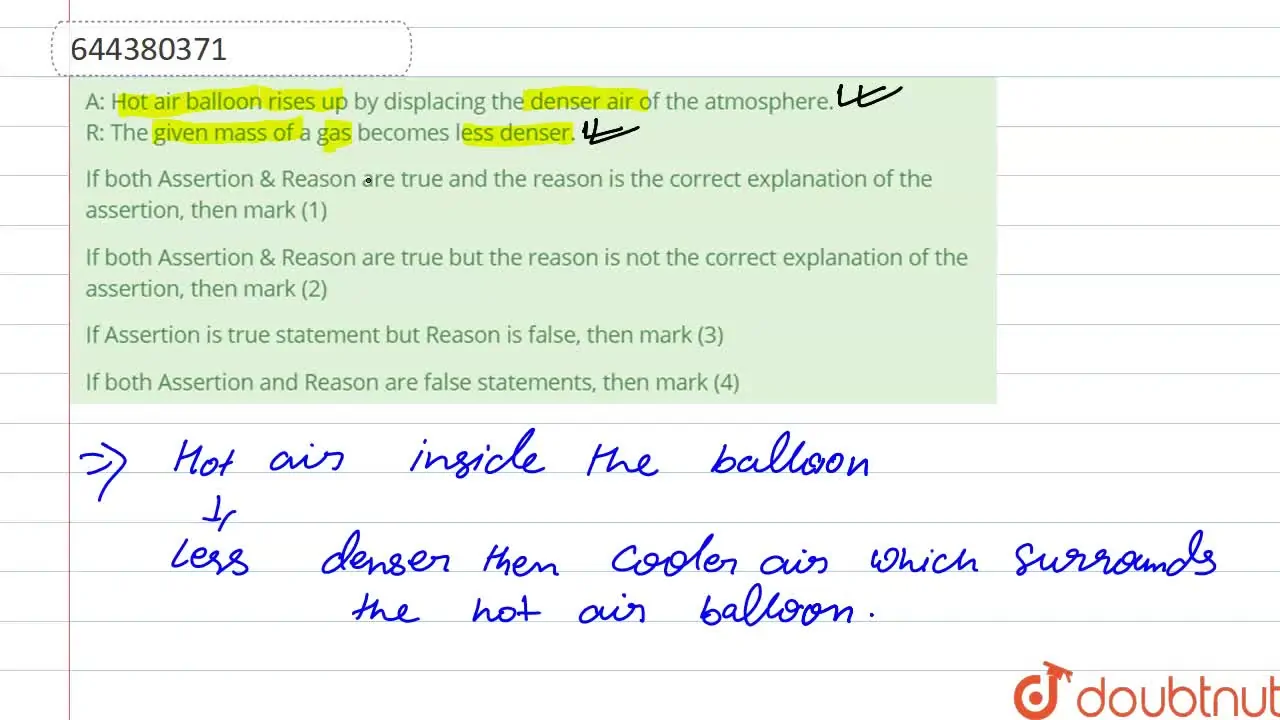A: Hot air balloon rises up by displacing the denser air of the atmosphere.
R: The given mass of a gas becomes less denser.
If both Assertion & Reason are true and the reason is the correct explanation of the assertion, then mark (1)
If both Assertion & Reason are true but the reason is not the correct explanation of the assertion, then mark (2)
If Assertion is true statement but Reason is false, then mark (3)
If both Assertion and Reason are false statements, then mark (4)
Step by step video & image solution for A: Hot air balloon rises up by displacing the denser air of the atmosphere. R: The given mass of a gas becomes less denser. by Chemistry experts to help you in doubts & scoring excellent marks in Class 12 exams.
Related Playlists
- BOOK - AAKASH INSTITUTE ENGLISHCHAPTER - STATES OF MATTEREXERCISE - ASSIGNMENT (SECTION-C)29videos
STATES OF MATTER
- BOOK - AAKASH INSTITUTE ENGLISHCHAPTER - SOME BASIC CONCEPTS OF CHEMISTRY EXERCISE - ASSIGNMENT SECTION J (Aakash Challenges Questions)10videos
SOME BASIC CONCEPTS OF CHEMISTRY
- BOOK - AAKASH INSTITUTE ENGLISHCHAPTER - STRUCTURE OF ATOMEXERCISE - ASSIGNMENT (SECTION -D) Assertion-Reason Type Questions15videos
STRUCTURE OF ATOM
Similar Questions
How does a hot air balloon work?
View SolutionThe gas produced by the passage of air over hot coke is
View SolutionWhy is air at sea level denser than air at mountains ?
View SolutionThe hot air rises up as its density increases.
View SolutionA hot- air balloon consists of a basket, one passenger, and some carge. Let the total mass be M. Even though there is an upward lift force on the balloon, the balloon is initially acceleration downwards at a rate of g/3.
(a) Draw a free-body diagram for the descending balloon.
(b) Find the upward lift force in terms of the initial total weight Mg.
(c ) The passenger notices that he is heading straight for a waterfall and decides he needs to go up. What fraction of the total weight must he drop overboard so that the balloon accelerates upward at a rate of g/2? Assume that the upward lift force remains the same.View SolutionA star can be considered as spherical ball of hot gas of radius R. Inside the star, the density of the gas is ρr at radius r and mass of the gas within this region is Mr.
The correct differential equation for variation of mass with respect to radius is (refer to the adjacent figure)View Solution
A hot air balloon was tied to a point on the ground using a rope 60m long. If the rope makes an angle of 60∘ with the ground, how high, in meters, is the balloon above the ground level?View SolutionA balloon of mass 10 kg is raising up with an acceleration of 20ms−2. If a mass of 4 kg is removed from the balloon its acceleration becomes ( take, g=10ms−2)
View SolutionA : Number of air molecules in a room in winter is more than the number of molecules in the same room in summer.
R : At a given pressure and volume, the number of molecules of a given mass of a gas is directly proportional to the absolute temperature.View SolutionAssertion : The use of hot air balloons in sports and for meteorological observations is an application of Charle's law
Reason : Hot air is less and hence gases expand on heatingView Solution


